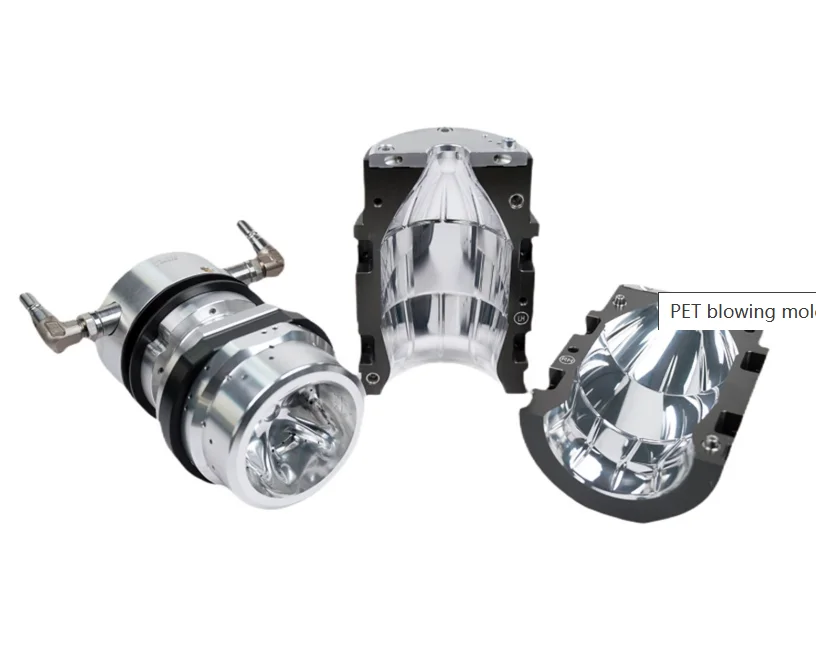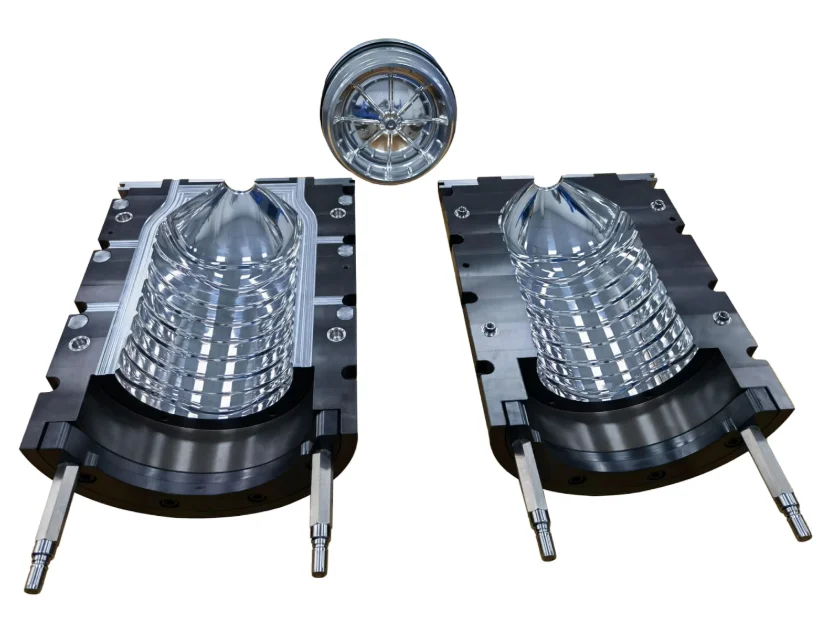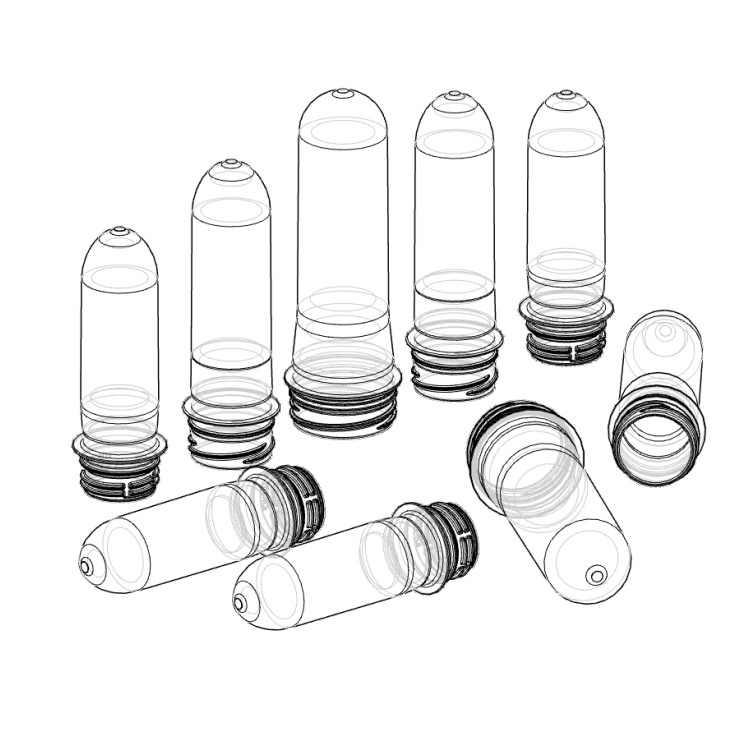What Factors Affect the Efficiency of PET Blow Molding Machines in Production
PET blow molding is a tricky process that needs the right mix of machine design, material know-how, and careful settings. Getting the best energy use and great bottle quality means understanding how these parts work together, from the infrared heating ovens that warm up preforms to the fast clamps and precise molds that shape the final bottle. This article digs into the key factors that boost performance in modern blow molding setups.

Machine Design and Configuration
The Role of Heating System Design in Energy Efficiency
The heating system in a PET blow molding machine plays a big role in energy use and bottle quality. Infrared heating ovens warm up preforms before blowing. How these heaters are set up and zoned decides how evenly heat spreads across the preform walls. A smart design uses just the right amount of energy to hit the best stretch-blow temperature. This cuts waste. BJY’s energy-saving tech in infrared heating systems lets you control each zone closely, saving power per bottle while keeping performance strong.
Influence of Clamping System Stability on Cycle Time
The clamping unit needs to stay super steady during fast operation. Any wobble or misalignment can slow down mold closing or mess up cavity sealing. This leads to longer cycle times or bad bottles. Top-notch machines use servo-driven clamps for speed and consistency. They keep cycles steady even when pumping out lots of bottles.
Importance of Mold Cavity Design for Uniformity and Speed
Mold design is key to getting bottles with consistent shape and wall thickness across all cavities. A good runner design ensures even wall thickness and tight sealing. This is super important for high-speed rotary lines. Multi-cavity setups boost output by letting all cavities work at once with little variation.
Material Characteristics and Preform Quality
How Preform Wall Thickness Affects Blowing Performance
Uneven preform wall thickness causes problems during blowing. Thicker spots might not stretch enough, and thinner ones could burst under pressure. This affects bottle strength and looks. Consistent preform manufacturing is a must, especially for lightweight designs that use less material.
Impact of Resin Type and IV Value on Stretching Properties
The intrinsic viscosity (IV) of PET resin sets its strength and stretchiness. Higher IV values give better stretching during blow molding, making stronger bottles with better barriers. Picking the right resin for the product—like carbonated drinks versus water—can really improve line efficiency and cut down on scrap.
Preform Storage and Handling Considerations
Preforms are picky about dust, moisture, and damage. Bad storage can lead to dirt or warping, which messes up how they fit in molds or react to heat. Factories should use controlled spaces with proper racks to keep preforms in good shape from storage to loading.
Process Parameters Optimization
Effects of Heating Temperature Profiles on Bottle Formation
Temperature settings across the preform need to match the bottle shape, resin type, and wall thickness goals. Too much heat can make the preform sag, while too little limits stretching. Advanced machines let you tweak temperatures for each zone, giving you precise control.
Air Pressure Settings and Their Role in Blow Forming Accuracy
Compressed air—low-pressure for pre-blow and high-pressure for final blow—shapes PET bottles inside the mold. Wrong pressure settings can cause incomplete shapes or weak spots that hurt bottle strength. High-pressure air pushes the soft preform against the mold walls for quick cooling, locking in details like threads or label panels.
Stretch Rod Speed and Timing Synchronization
Stretch rod movement needs to sync perfectly with air injection to stretch the material right along both axes. Servo-controlled rods let you program speed settings that adjust to different preform sizes or mold setups.

Automation and Control Systems Integration
Benefits of Advanced PLC Systems for Real-Time Monitoring
Programmable Logic Controllers (PLCs) handle sequences, alarms, temperatures, pressures, and diagnostics in real time. Modern systems have touchscreen displays with recipe storage for quick switches between bottle types.
Servo-Driven Components for Precise Motion Control
Servo motors beat pneumatic actuators for controlling mold cycles or stretch rod movement. They’re super precise, which means less wear, faster cycles, and fewer bad bottles due to misalignment.
Integration with Vision Systems for Quality Inspection
In-line vision systems spot defects like flash lines, short shots, or dirt before bottles leave the machine. When tied into the machine’s controls, they auto-reject bad items without stopping the line.
Maintenance Practices and Machine Condition
Routine Maintenance Schedules to Prevent Downtime
Regular maintenance—like daily cleaning, weekly lubrication, monthly sensor checks, and quarterly calibrations—keeps machines running smoothly. This cuts unexpected breakdowns and extends equipment life.
Modular designs make cleaning, maintenance, and part swaps easy. Operators can use standard tools without taking apart big chunks of the machine.
Wear and Tear of Key Components: Valves, Cylinders, Seals
Parts like solenoid valves, pneumatic cylinders, and seals wear out over time from heat or dirty air systems. BJY’s replacement parts have a smarter design than originals, lasting longer and installing easily.
Lubrication Management for Long-Term Efficiency
Automated lubrication systems keep guide rails and toggle joints slick. Skipping lubrication causes friction, which messes up alignment over time.
Production Environment and Utilities Stability
Compressed Air Quality and Its Effect on Final Product Integrity
Clean air is a big deal for food-grade bottles. Dirty air can contaminate bottles. Use inline dryers and oil separators before the blow stations to keep things clean.
Cooling Water Flow Rate Consistency for Mold Temperature Control
Steady water flow through mold channels keeps surface temperatures even during cycles. Changes in flow mess up cooling, which affects bottle clarity or strength.
Environmental Conditions: Temperature, Humidity, Dust Levels
Room conditions impact machine electronics and bottle quality. Dust or static can cause issues. Enclosed production areas with filtered air help keep infrared ovens and vision systems working right.
Operator Skill Level and Training Programs
Importance of Technical Training for Setup Optimization
Trained operators set up machines faster by adjusting settings based on bottle specs, not guesswork. Training should cover mechanical tweaks and how to use the machine’s interface.
Troubleshooting Skills to Minimize Production Interruptions
Operators who know how to find the root of problems—like a misaligned mold or air leak—fix issues quickly. This cuts downtime without always needing an engineer.
Customization and Product Matching with BJY Solutions
If you need precision molds that work with global standards like SIDEL or KRONES, BJY is your go-to. They offer custom bottle designs and reverse-engineer existing samples. Their CNC-crafted molds, made from aircraft-grade aluminum, are built for high-speed rotary machines. The 555ml PET Blow Mould is a top pick, designed for reliable results under constant use.
Energy Consumption and Sustainability Considerations
Evaluating Energy Usage per Bottle Across Different Models
Check energy use per 1,000 bottles, not just per hour, to compare models fairly. BJY’s energy-saving infrared heating systems target only needed heat zones, cutting power waste without overheating nearby areas.
Role of Lightweight Bottle Design in Reducing Resource Use
Lightweight designs use less resin while keeping bottles strong through smart shapes and precise molds. This cuts the carbon footprint per bottle produced.
Quality Assurance Through Process Stability
Monitoring Wall Thickness Distribution Consistency
Vision systems with wall thickness tools check each cavity at full speed. They catch issues early to avoid mass rejects, especially for carbonated drinks or hot-fill bottles needing consistent heat resistance.
Maintaining Dimensional Accuracy Across Cavities
Precision machining with S136 hardened steel inserts keeps all cavities consistent. BJY’s molds, made with advanced CNC tech and aircraft-grade aluminum, hold tight tolerances even after millions of cycles in hot, high-speed beverage lines.
Ensuring Repeatability with BJY’s Closed-Loop Feedback Systems
Closed-loop controls tweak settings automatically based on sensor data—like temperature shifts in ovens or pressure changes in blow chambers. This keeps the process steady across shifts without manual fixes.
Let BJY’s precision molds and energy-saving solutions boost your productivity. Get a free consultation now!
FAQ
Q1: What materials are used in PET blow molds?
A: Most molds use aircraft-grade aluminum bases with S136 hardened steel inserts. These handle high heat and last through long production runs.
Q2: How often should I replace parts like valves or seals?
A: It depends on use, but every 6–12 months is typical. BJY’s replacement parts last longer than standard ones and are easier to install.
Q3: What machine should I pick for mid-volume production?
A: For mid-volume runs needing flexibility and speed, go for a rotary blow molding machine with servo controls and multi-cavity molds, like BJY’s setups.



